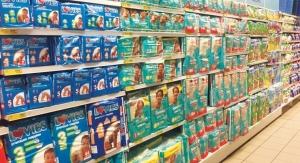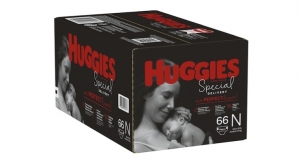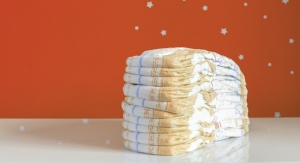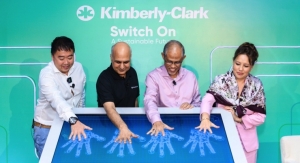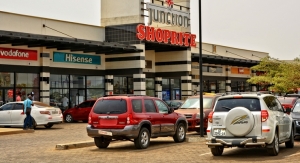Raymond Chimhandamba, Handas Consulting (Africa Market Specialist), Johannesburg, South Africa09.13.19
South Africa is Africa’s second biggest economy, after Nigeria. The diaper category in South Africa, according to a 2018 Euromonitor report, grew by 7% in value terms to reach R6 billion (US$423 million). South Africa is the fifth largest country in Africa in terms of population and ninth largest in terms of land area, but South Africa is by far the most advanced and richest country on the continent, according to a Fin24 report.
Dive Deeper: Become An Industry Insider To Get More Diaper Market Intel
The South African economy has been facing a few headwinds in recent years, ranging from political leadership challenges to socio-economic challenges. GDP growth has been negative or below 1% at best. This has resulted in consumers that are currently highly squeezed for disposable income in a market where affordability was already an issue. Therefore, well-priced products in any consumer goods category, including diapers, is quite critical for the growth of the category. Private labels have been a good driver of affordability in South Africa’s baby diaper market. However, branded players will continue to outperform private label ranges, mainly due to their high levels of consumer trust and quality that they have built over the years. Compared to other developed markets, private label in South Africa in consumer goods still has a lot of room to grow. The 2018 Euromonitor report shows that the private label diaper category was at 5.5%, of which 4.1% was Clicks alone.
Private label offerings and value offerings by brand owners and manufacturers in the form of promotions across the retail channels throughout the year had the ability to accommodate various consumer segments, thereby driving volume and hence growth in the diaper category. The average unit price increased by 3% in 2018. Procter & Gamble was leading with 40% retail value share in 2018. Nappies/diapers/pants recorded a current value CAGR of 7% (2% at constant 2018 prices) over the forecast period to reach ZAR 8.5 billion (US$600 million) by 2023.
Pick n Pay’s no frills No Name brand, in its plain white and blue packaging, does a good job of bringing baby diapers within reach of the entry level consumer. Leading parapharmacy, Clicks, has taken a more strategic approach by implementing bold color schemes of yellow or purple on its packaging, accompanied by claims such as “super absorbent for day and night use.” Clicks has distinguished itself by its offer of larger value packs, hundreds, which the major players also have started copying, proving that it is a winning formula.
Shoprite, the biggest retailer in South Africa and also the only South African retailer in the top 100 globally, placed at 86th place. The South African retail landscape is dominated by Shoprite Holdings (also owner of the Checkers and OK retail brands), followed by Massmart. Pick n Pay is in third place while Spar is number four. Woolworths brand, while perhaps the most premium of all South African retail brands, is number five and only stocks number one and two in most categories, which leaves space only for Pampers and Huggies and their own label. Cuddlers, owned by National Pride, part of the Lodestone Brands, would be the number three brand in this market.
The Key Players
Euromonitor argues that South Africa’s birth rate remains above the global average, thereby sustaining demand for the category. Top 3 brands include Pampers, Huggies and Cuddlers. Procter and Gamble’s Pampers led the market with a 40% value share in 2018, followed by Kimberly Clark’s Huggies. Regional variations exist. While Pampers may be number one nationally, anecdotal evidence from among players gives the impression that there are regions where Huggies may be number one, such as Western Cape, although they may be number two nationally. This is quite possible since Huggies is a close number two at 38.8%.
The key baby diaper category players in South Africa include Procter and Gamble, Kimberly-Clark, Lodestone Brands, Cleopatra Tissue Products and L’il Masters. L’il Masters, Cleopatra and Lodestone Brands, in addition to manufacturing their own brands, also fight it out for the market share for the private labels of the leading retail players and pharmaceutical companies.
New product developments have been a key arsenal used by the big brands in this market to remain relevant and to consolidate their positions. Huggies introduced a comprehensive range aimed specifically at newborns, the Huggies Preemie range, which is designed for premature babies. Huggies Gold New Baby is also tailored for size 0 newborns, boasting a unique umbilical cord cut-out, while the format also has a quilted triple absorption liner to protect babies’ sensitive skins. Another range, Huggies Gold, is marketed specifically for babies who crawl and move around. Stretch waistbands and fasteners ensure the nappies have a good fit but do not cause any discomfort.
National Pride’s Cuddlers, the market’s number three, continued to gain share. Cuddlers was recently bought by Lodestone Brands. Euromonitor’s report shows that Lodestone Brands’ investment in packaging and advertising has been paying off. The packaging was clearly changed, featuring a solid purple theme which is easily recognizable. Innovation in the company’s pants range included a stretch waistband, as well as tear off sides to help put the nappy/diaper on and take it off. The new range claims to have a super absorbent core, triple leakage protection and super-soft breathable fabric.
Lodestone Brands is a fairly young consumer goods company that was formed in 2009. The private equity shareholders exited in 2014 and today the company has three consumer goods divisions comprising baby and personal care, confectionary and beverages. In addition to Cuddlers brand, Lodestone also has two strong regional brands in Baby Panda and Absorbers. They have a fairly strong export component to their business. Panda has traditionally targeted the entry level consumer, it is a regional brand that has improved with time in quality and today it has a premium version. Absorbers has traditionally been a more premium offering with Velcro, breathable backsheet and high absorbency.
Information on anything and everything is readily available in this day and age, so in addition to friends, family and medical professionals, new parents also turn to social media, where they can join groups in order to obtain information from real people who have also tried and tested brands. Most brands are quite active in the social media space and other online platforms, which are used quite strongly for product reviews. Hygiene brands give tips and advice to new parents on their own websites about how to deal with babies and their needs.
Cleopatra and L’il Masters are the other two local manufacturers, based in Durban and Johannesburg respectively. Cleopatra makes the full range of hygiene products, from tissue, baby diapers, adult incontinence, sanitary pads and wet wipes. Cleopatra has installed a new state-of-the-art line in its new facility in Southgate, Durban. Cleopatra boasts of their quality control and their 13 years’ expertise in the business and a robust distribution system built over years, with a capability to deliver anywhere in the SADC region within 48 hours. They also have distribution centers within SADC in Namibia, Zimbabwe, Swaziland, Botswana and also export from their Durban factory. Cleopatra’s own diaper brand is called DryNaps, but is also a significant player in the private label space.
L’il Masters, another family owned diaper manufacturing business, has also moved to new, bigger, better and more modern premises in the last year and a half, indicating that there is growth as a business and in hygiene as a sector. Also with more than a decade of experience, L’il Masters has also built a good track record for quality and capability, earning them their own enviable niche in the private label space and own brands in wet wipes and baby diapers.
This is a clear sign that South Africa has a great future in hygiene and indeed the diaper category. Strategically situated at the tip of the African continent, the country is well positioned to attract hygiene sector investment and leverage its position to service the rest of the SADC markets. The R1.3bn investment by Pegas Nonwovens, the largest producer of spunmelt nonwovens in Europe, the Middle East and Africa – with 570 employees globally and two major production facilities in the Czech Republic and Egypt, in 2017, was another indication of the possibilities that South Africa holds for the hygiene sector.
The Informal Channel
In places like the Western Cape, international brands like Drypers are also very well-known to consumers as they have been around for more than 25 years. Drypers is an Essity brand and imported to South Africa from Malaysia by RP International, which started as a one man show in 1993. Drypers is not visible in modern retail but it is a significant brand in the independent supermarkets, the townships and generally in the informal channel. With the availability of quality global brands such as Drypers at affordable prices and over many years, over two decades and close to three, over and above the usual quality brands in the formal trade, the Western Cape as a market has a much higher threshold for quality in diapers than other regions in South Africa.
Much as South Africa is the most developed market in Africa and has the best retail sector, about 30-40% of the retail sales are still through the informal channel and several studies indicate the same. Discussions with key players in the informal channel confirms that certain entry level diaper products that are acceptable and sell well in other regions of South Africa, will not be acceptable to the consumer in Cape Town and surrounding areas.
P&G’s Pampers is driving the pants category. The informal channel is important to the baby diaper brands big and small. Perhaps one of the key indicators is the steps taken by the big brands as a way to focus on the informal channel.
Huggies also developed a jumbo pack of 100 diapers for all sizes, with individually wrapped diapers, which they strongly drove through the wholesalers and Cash and Carries. This pack was aimed at the small traders and small scale entrepreneurs who were buying it for resale. This way, the diaper was kept hygienically protected until the point just before it was used, although it may be sold as a single piece. This pack must have proven expensive because in the last two years or so, Kimberly-Clark has discontinued it.
Another indication of the importance of the informal channel is how Pick n Pay, one of the key modern retail players in South Africa, is slowly making inroads into this channel. In the last few years Pick n Pay has been partnering with Spaza Shops that have the capacity to meet their standards and bringing them under the Pick n Pay brand. The advantage includes access to the big discounts from manufacturers that Pick n Pay’s sheer size brings.
South Africa also imports B grade diapers in big quantities and they move through the informal channels. They are repacked into clear plastic and the consumer in the informal channel has come to know the clear plastic as the cue to indicate value or low price. In the informal channel there is also a clear agreed ceiling and price point. Currently that price point is more or less R1.20 per piece. Above that point it doesn’t matter how good the quality of the brand is but it will move much slower. Not all the products are rejects from the line as some are overruns or discounted stock from Europe, the U.S. or Asia. Certain international brands have become regulars in the informal channel, with consumers asking for them by name. Fitti, Molfix from Hayat, Drypers and other European brands are among some of them. Some of the players and distributors in this space have become very big and powerful and move huge volumes of stock through sub-distributors. These repacked B grades also find themselves outside South African borders into the rest of the other SADC markets.
Dive Deeper: Become An Industry Insider To Get More Diaper Market Intel
The South African economy has been facing a few headwinds in recent years, ranging from political leadership challenges to socio-economic challenges. GDP growth has been negative or below 1% at best. This has resulted in consumers that are currently highly squeezed for disposable income in a market where affordability was already an issue. Therefore, well-priced products in any consumer goods category, including diapers, is quite critical for the growth of the category. Private labels have been a good driver of affordability in South Africa’s baby diaper market. However, branded players will continue to outperform private label ranges, mainly due to their high levels of consumer trust and quality that they have built over the years. Compared to other developed markets, private label in South Africa in consumer goods still has a lot of room to grow. The 2018 Euromonitor report shows that the private label diaper category was at 5.5%, of which 4.1% was Clicks alone.
Private label offerings and value offerings by brand owners and manufacturers in the form of promotions across the retail channels throughout the year had the ability to accommodate various consumer segments, thereby driving volume and hence growth in the diaper category. The average unit price increased by 3% in 2018. Procter & Gamble was leading with 40% retail value share in 2018. Nappies/diapers/pants recorded a current value CAGR of 7% (2% at constant 2018 prices) over the forecast period to reach ZAR 8.5 billion (US$600 million) by 2023.
Pick n Pay’s no frills No Name brand, in its plain white and blue packaging, does a good job of bringing baby diapers within reach of the entry level consumer. Leading parapharmacy, Clicks, has taken a more strategic approach by implementing bold color schemes of yellow or purple on its packaging, accompanied by claims such as “super absorbent for day and night use.” Clicks has distinguished itself by its offer of larger value packs, hundreds, which the major players also have started copying, proving that it is a winning formula.
Shoprite, the biggest retailer in South Africa and also the only South African retailer in the top 100 globally, placed at 86th place. The South African retail landscape is dominated by Shoprite Holdings (also owner of the Checkers and OK retail brands), followed by Massmart. Pick n Pay is in third place while Spar is number four. Woolworths brand, while perhaps the most premium of all South African retail brands, is number five and only stocks number one and two in most categories, which leaves space only for Pampers and Huggies and their own label. Cuddlers, owned by National Pride, part of the Lodestone Brands, would be the number three brand in this market.
The Key Players
Euromonitor argues that South Africa’s birth rate remains above the global average, thereby sustaining demand for the category. Top 3 brands include Pampers, Huggies and Cuddlers. Procter and Gamble’s Pampers led the market with a 40% value share in 2018, followed by Kimberly Clark’s Huggies. Regional variations exist. While Pampers may be number one nationally, anecdotal evidence from among players gives the impression that there are regions where Huggies may be number one, such as Western Cape, although they may be number two nationally. This is quite possible since Huggies is a close number two at 38.8%.
The key baby diaper category players in South Africa include Procter and Gamble, Kimberly-Clark, Lodestone Brands, Cleopatra Tissue Products and L’il Masters. L’il Masters, Cleopatra and Lodestone Brands, in addition to manufacturing their own brands, also fight it out for the market share for the private labels of the leading retail players and pharmaceutical companies.
New product developments have been a key arsenal used by the big brands in this market to remain relevant and to consolidate their positions. Huggies introduced a comprehensive range aimed specifically at newborns, the Huggies Preemie range, which is designed for premature babies. Huggies Gold New Baby is also tailored for size 0 newborns, boasting a unique umbilical cord cut-out, while the format also has a quilted triple absorption liner to protect babies’ sensitive skins. Another range, Huggies Gold, is marketed specifically for babies who crawl and move around. Stretch waistbands and fasteners ensure the nappies have a good fit but do not cause any discomfort.
National Pride’s Cuddlers, the market’s number three, continued to gain share. Cuddlers was recently bought by Lodestone Brands. Euromonitor’s report shows that Lodestone Brands’ investment in packaging and advertising has been paying off. The packaging was clearly changed, featuring a solid purple theme which is easily recognizable. Innovation in the company’s pants range included a stretch waistband, as well as tear off sides to help put the nappy/diaper on and take it off. The new range claims to have a super absorbent core, triple leakage protection and super-soft breathable fabric.
Lodestone Brands is a fairly young consumer goods company that was formed in 2009. The private equity shareholders exited in 2014 and today the company has three consumer goods divisions comprising baby and personal care, confectionary and beverages. In addition to Cuddlers brand, Lodestone also has two strong regional brands in Baby Panda and Absorbers. They have a fairly strong export component to their business. Panda has traditionally targeted the entry level consumer, it is a regional brand that has improved with time in quality and today it has a premium version. Absorbers has traditionally been a more premium offering with Velcro, breathable backsheet and high absorbency.
Information on anything and everything is readily available in this day and age, so in addition to friends, family and medical professionals, new parents also turn to social media, where they can join groups in order to obtain information from real people who have also tried and tested brands. Most brands are quite active in the social media space and other online platforms, which are used quite strongly for product reviews. Hygiene brands give tips and advice to new parents on their own websites about how to deal with babies and their needs.
Cleopatra and L’il Masters are the other two local manufacturers, based in Durban and Johannesburg respectively. Cleopatra makes the full range of hygiene products, from tissue, baby diapers, adult incontinence, sanitary pads and wet wipes. Cleopatra has installed a new state-of-the-art line in its new facility in Southgate, Durban. Cleopatra boasts of their quality control and their 13 years’ expertise in the business and a robust distribution system built over years, with a capability to deliver anywhere in the SADC region within 48 hours. They also have distribution centers within SADC in Namibia, Zimbabwe, Swaziland, Botswana and also export from their Durban factory. Cleopatra’s own diaper brand is called DryNaps, but is also a significant player in the private label space.
L’il Masters, another family owned diaper manufacturing business, has also moved to new, bigger, better and more modern premises in the last year and a half, indicating that there is growth as a business and in hygiene as a sector. Also with more than a decade of experience, L’il Masters has also built a good track record for quality and capability, earning them their own enviable niche in the private label space and own brands in wet wipes and baby diapers.
This is a clear sign that South Africa has a great future in hygiene and indeed the diaper category. Strategically situated at the tip of the African continent, the country is well positioned to attract hygiene sector investment and leverage its position to service the rest of the SADC markets. The R1.3bn investment by Pegas Nonwovens, the largest producer of spunmelt nonwovens in Europe, the Middle East and Africa – with 570 employees globally and two major production facilities in the Czech Republic and Egypt, in 2017, was another indication of the possibilities that South Africa holds for the hygiene sector.
The Informal Channel
In places like the Western Cape, international brands like Drypers are also very well-known to consumers as they have been around for more than 25 years. Drypers is an Essity brand and imported to South Africa from Malaysia by RP International, which started as a one man show in 1993. Drypers is not visible in modern retail but it is a significant brand in the independent supermarkets, the townships and generally in the informal channel. With the availability of quality global brands such as Drypers at affordable prices and over many years, over two decades and close to three, over and above the usual quality brands in the formal trade, the Western Cape as a market has a much higher threshold for quality in diapers than other regions in South Africa.
Much as South Africa is the most developed market in Africa and has the best retail sector, about 30-40% of the retail sales are still through the informal channel and several studies indicate the same. Discussions with key players in the informal channel confirms that certain entry level diaper products that are acceptable and sell well in other regions of South Africa, will not be acceptable to the consumer in Cape Town and surrounding areas.
P&G’s Pampers is driving the pants category. The informal channel is important to the baby diaper brands big and small. Perhaps one of the key indicators is the steps taken by the big brands as a way to focus on the informal channel.
Huggies also developed a jumbo pack of 100 diapers for all sizes, with individually wrapped diapers, which they strongly drove through the wholesalers and Cash and Carries. This pack was aimed at the small traders and small scale entrepreneurs who were buying it for resale. This way, the diaper was kept hygienically protected until the point just before it was used, although it may be sold as a single piece. This pack must have proven expensive because in the last two years or so, Kimberly-Clark has discontinued it.
Another indication of the importance of the informal channel is how Pick n Pay, one of the key modern retail players in South Africa, is slowly making inroads into this channel. In the last few years Pick n Pay has been partnering with Spaza Shops that have the capacity to meet their standards and bringing them under the Pick n Pay brand. The advantage includes access to the big discounts from manufacturers that Pick n Pay’s sheer size brings.
South Africa also imports B grade diapers in big quantities and they move through the informal channels. They are repacked into clear plastic and the consumer in the informal channel has come to know the clear plastic as the cue to indicate value or low price. In the informal channel there is also a clear agreed ceiling and price point. Currently that price point is more or less R1.20 per piece. Above that point it doesn’t matter how good the quality of the brand is but it will move much slower. Not all the products are rejects from the line as some are overruns or discounted stock from Europe, the U.S. or Asia. Certain international brands have become regulars in the informal channel, with consumers asking for them by name. Fitti, Molfix from Hayat, Drypers and other European brands are among some of them. Some of the players and distributors in this space have become very big and powerful and move huge volumes of stock through sub-distributors. These repacked B grades also find themselves outside South African borders into the rest of the other SADC markets.


